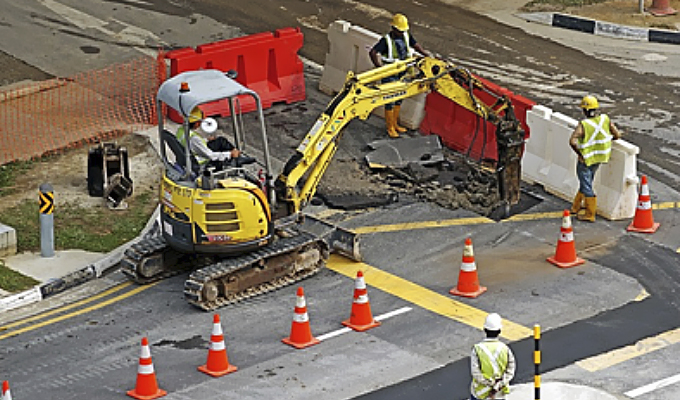It is common to see heavy equipment in every construction site. If the machines are not operated properly, it can lead to dangerous repercussions. Implementing construction site safety measures will keep the workers safe from accidents.
SAFETY PROTECTION TIPS FOR OPERATORS
Encourage safety culture in construction by following these tips:
Wear gloves and boots: These offer grip when getting onto your machine. Keep them clean to ensure maximum grip.
Use a three-point stance while ascending and descending: Make sure three limbs are always in contact with three separate areas of the equipment. These can be handles or steps. This keeps you safe and ensures that your weight is distributed properly. Even if one of your hands or feet slip, you can regain stability quickly.
Use a stepladder: If the machine does not have mounting-dismounting equipment, use a stepladder to climb into or out of the machine.
Secure hands and feet: Do not use just the fingers and toes to keep you stable before getting into the machine. Put the entire foot and hand on the step and handle to get in securely. Avoid handrails as well.
Wear seat belts: Always wear a seat belt while operating heavy machinery. This helps in preventing potential injuries if there are any collisions, accidents, or mishaps.
Personal Protective Equipment: Using PPE like hard hats, protective eye wear, gloves and steel-toed boots is critical. They help in preventing work-related injuries.
7 TIPS FOR SAFETY OF CONSTRUCTION EQUIPMENT
Conduct regular vehicle inspection. You must have a custom safety check for every vehicle. Do a visual and in-depth inspection on a daily, weekly or monthly basis depending on the equipment’s requirements. An inspection helps you identify issues if there are any, which you must fix before operating the equipment.
There may be a chance of the heavy equipment rolling or slipping over a steep edge. Make sure the equipment has a rollover protective structure (ROPS) as it protects the operators from such rollovers and overturns.
Clean out the debris collected in the equipment. Inspect steps, handrails, pedals, grab irons, and cab floor for debris or defects. Debris will either affect the performance of the equipment or cause damage.
Check controls for proper operation. Make sure all the backup alarms are working properly so that you can rely on them in the time of crisis.
Stick to the weight limits of the equipment. Never carry a heavier load than what the machine is capable of. Doing this will either cause damage to the equipment or overturn the equipment due to the excess weight.
Park the equipment on level ground. An uneven ground may cause the equipment to move or slip, even when parked.
When you exit the equipment, relieve pressure from all the hydraulic controls and wait for all motions to stop. Use the 3-point stance rule to dismount safely.
Train the workers on the dangers and hazards of working with heavy equipment. Proper training will help them handle dangerous situations in the right manner.
About the author: Jeson Pitt works with the marketing department of D&F Liquidators and regularly writes to share his knowledge while enlightening people about electrical products and solving their electrical dilemmas. He’s got the industry insights that you can count on along with years of experience in the field. Jeson lives in Hayward, California, and loves to explore different cuisines that the food trucks in the Bay area have to offer.


